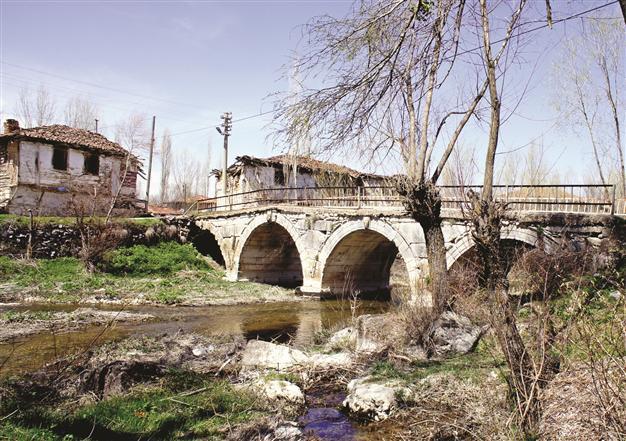Ancient bridge at Aizanoi to be restored
KÜTAHYA - Anatolia News Agency

When the restoration is complete, the Roman bridge will become a tourist attraction, according to the excavation team. AA photo
A bridge built by Roman merchant Apuleius Eurykles in the ancient city of Aizanoi some 2,000 years ago, after he and his family survived a sea accident, is now being restored by a Turkish businessman who also survived a sea accident.The Aizanoi Ancient City Excavation Team, headed by a lecturer from Pamukkale University’s Archaeology Department, Assistant Professor Elif Özer, learned this interesting detail during the excavations.
Inscription reveals the fact
The Roman benefactor, Eurykles, wrote in the inscription of the bridge that he and his family had survived a sea accident and built the bridge in the ancient city of Aizanoi, now located in the Aegean province of Kütahya’s Çavdarhisar district. “Eurykles even wrote in the inscription that he had seen very interesting sea creatures, and put images of these creatures on the walls,” Özer said.
The bridge is now undergoing a restoration sponsored Anemon Hotels, owned by İsmail Akçura, who barely survived a sea accident with his family in 2008 in Marmaris when his yacht filled with water.
The bridge was still strong and in use after 2,000 years, but they would return the guard walls of the bridge to their original place, Özer said. “The bridge will regain its magnificent structure after the restoration process.”
Özer said work also continues at nine points in the second-term excavations that began in the ancient city May 17. The excavation team is classifying stones from historical structures in the ancient city, and the area will eventually become a tourist attraction, she said.
Villagers on the team
Excavations continue around the Temple of Zeus as well as the stadium and bath structures, Özer said. “Our team includes women who used to work in the fields. They are working very carefully and learning about archaeological digs. They are employed, even for a short time.”
















